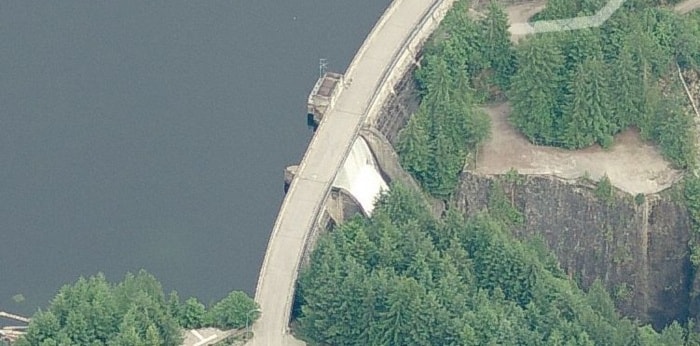Metro Vancouver intends to add turbines to generate hydroelectric power at its North Shore dams that hold back the Capilano and Seymour reservoirs.
And regional district reps are giving assurances the diversion of water for power revenue won't leave fish high and dry without enough water to survive.
Metro estimates it would earn $6 to $10 million a year from the electricity that would be generated at the proposed 16-megawatt Capilano hydro project beside the Cleveland Dam.
That would be a new net source of revenue after the $75 to $90 million capital project is paid off over about 10 to 15 years.
A smaller power station costing $25 to $40 million would be built later at Seymour. It would generate less power and earn $1.3 million to $2.3 million from energy sales, taking 20 to 35 years before the capital cost would be paid off.
Power sales would help pay for Metro's water system — the region is steadily ratcheting up utility fees to residents in order to upgrade water and sewer infrastructure.
"There will be no negative aspects to this," pledged North Vancouver City Mayor Darrell Mussatto, chair of Metro's utilities committee. "We're not talking about whether we build a dam or not. The dam stays at the same height and it stays where it is."
Metro estimates it can safely divert some water to turn the turbines in the rainy months of the year without running short for drinking water.
"It's only when we have excess spill water going over the dam that we'll be doing this," Mussatto said.
Metro also promises better flow control and other upgrades that will improve conditions for salmon, which can sometimes be stranded at low water during dry months or die falling over the Cleveland dam.
The Metro board adopted its Joint Water Use Plan for the two reservoirs Friday after two years of technical study.
The drinking water supply and fish habitat considerations would come first, ahead of power-generation goals, according to the plan, which sets minimum mandatory water levels to protect salmonids.
Of particular concern is a run of steelhead that lay eggs in the gravel below the Cleveland Dam in early July.
"That's one of the most endangered fish runs in the province," said Vancouver Coun. Heather Deal, who chairs Metro's environment and parks committee. "We need to make sure the gravel is sufficiently watered to keep those eggs alive until they're able to hatch."
Watershed Watch Salmon Society executive director Craig Orr said he will be watching how the plans unfold and to ensure fish habitat doesn't slip as a priority after the region has shelled out large amounts of money to pursue power revenue.
"Any time you increase generation capacity in a system it comes with some risk to the environment – that needs to be kept in mind."
He said BC Hydro's generation of power at the Coquitlam reservoir has caused many strandings of coho salmon downstream.
Metro's plans are subject to regulatory review by the provincial government, which would issue the water licences before the region conducts more work and begins construction.
